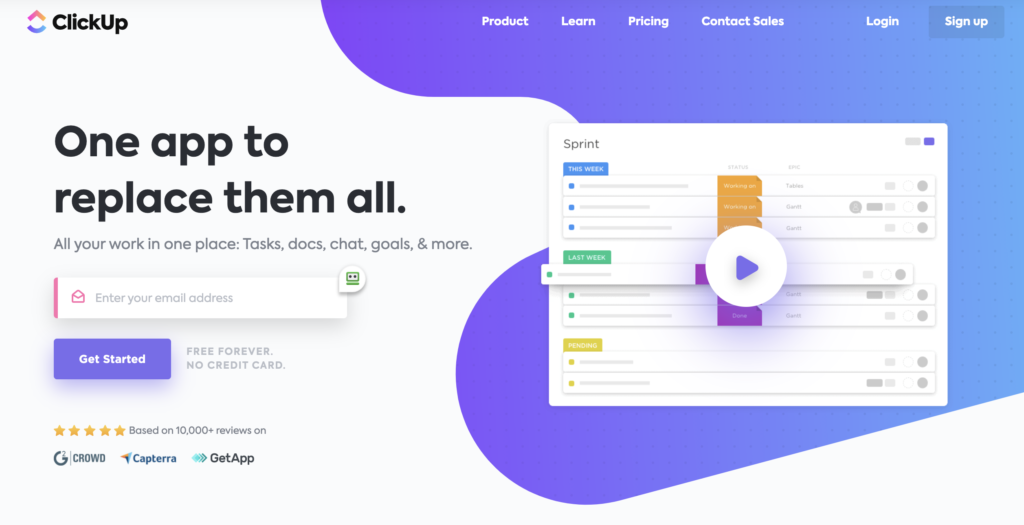Our newest car model is “best in class!”
These scissors are 70% titanium!
We provide internet with speeds up to 100Mbps!
So, what?
What is Customer-Centric Marketing?
Customer-centric marketing has been around for a long time, but many businesses and business owners don’t use it and have no idea what it is. This is severely unfortunate because customer-centric marketing is much more effective than alternatives (which I’ll discuss). Customer-centric marketing is more effective because it focuses on what matters to the customer – not the company or product features. Companies like Salesforce and Warby Parker show that customer centricity can turn into conversions and sales. This blog post will cover why customer-focused marketing is so important, how you implement this strategy, and show examples of excellent customer-focused marketing campaigns.
I don’t care if a car is “best in class” – I care about how safe and fuel-efficient it is (or how cool I’ll look while driving it).
I don’t care what the scissors are made of – I care that they won’t break when I’m cutting chicken bone while making dinner.
I don’t care about how many megabits are flying through the cables under my house – I just care that I can Facetime my parents while my family streams a 4K movie in the other room.
Customer-centric marketing delivers a message that matters to the customer or end-user. It addresses their problems and offers the solution. Customers don’t have to do the math to figure out if your product or service will work for them. You know what they want and tell them “this will work.”
No One Cares About Your Product or Company
The hard truth is no one cares about your product or company. Your audience is only interested in solving the problem they have. While some features of your product or info about your company may be relevant, they are simply a means to an end. This is a common refrain at Hot Dog Marketing.
Occasionally, these overlap. For instance, your audience may find solace in learning that you’ve been in business since 1998. But that’s only because they’re using the fact that you are still in business to vet whether you are good enough to solve their problem. What goes unsaid is that if you were terrible, you likely wouldn’t be in business still. Let’s be honest – that’s not a compelling message. Plus, it still makes the audience think too hard.
The customer-centric approach focuses on how your product will improve the customer’s life. This is better than self-centered marketing, which only talks about what you offer, or company-centric that highlights how awesome you are. A customer may not care about your feature set if it doesn’t help them solve their problems. Customers don’t want to read specs and instruction manuals, they want a better future. Your product or service can help them get there, but if you aren’t delivering a customer-centric message, they may have no idea what value you can bring.
Paint the Vision of a Better Future
As humans, we make purchases because of the stories we choose to believe about the world. We have a vision of the future (whether conscious or unconscious), and we try to find products or services that can help us create it.
If you’re selling something, customer-centric marketing is all about painting the picture of how your product will give them their better future. In this case, “better” doesn’t mean more advanced features or shiny new technology; it means how the customer will receive more enjoyment, pleasure, safety, comfort, respect, excitement, or other emotion from purchasing or using your product. To develop these campaigns, don’t simply state how your product will solve their problem, but appeal to your audience’s emotions.
Back to my three earlier examples:
I want a safe car so that I feel like I’m taking care of my family.
I want kitchen scissors to cut chicken bones to make a nice dinner to impress my guests.
I want fast internet so that I can connect with my family and feel loved by them.
It’s not simply the “doing” that compels me in each of these cases; it’s the “feeling.” Consider how your customers feel while dealing with their problem or searching for solutions.
Do they feel:
- scared?
- left out?
- frustrated?
- disappointed?
- worried?
How can you address your audience’s problems and offer them a solution through the lens of their feelings?
Examples of Successful Customer-Centric Marketing Campaigns
Okay, I’ve shared a few examples of poor campaigns and provided simple illustrations of customer-centric marketing, but how have other companies used this concept in the wild? Let’s explore.
Apple: iPod Campaign: 1,000 songs in your pocket
This campaign is a classic. It’s almost not even a traditional marketing campaign because it started with Steve Jobs (CEO of Apple at the time) simply making the statement on stage at one of Apple’s annual events. However, the effect was monumental. While competitors touted how many megabytes of storage their mp3 players had, Apple spoke to what mattered to the audience: how many songs the audience can listen to. iPod sales skyrocketed and the rest is history.
This is also a great case of how marketing doesn’t necessarily imply advertising. Marketing, at its core, is communicating with your audience.
Google Photos: Loretta Campaign
Here’s a more recent example I found astounding. During the 2020 Superbowl, Google ran an ad for their cloud storage product for photos. Let’s be real – storing photos is not exciting. So, how did Google make me and many other people (nearly) tear up in only 90 seconds? They told a story – a love story. And they showed how their product didn’t simply store photos but saved memories.
Clickup: Website Hero Messaging

This example is wonderful because it actually speaks to two things: how the app is an all-in-one solution and the customers’ frustration with juggling multiple platforms for project management, dispersed collaboration, digital communication, etc. But wait – it gets better. Not only did they communicate the value proposition and connect with the audience’s struggles, but they made a play on words from a well-known phrase from a well-loved story: Lord of the Rings. This also goes to show that customer-centric marketing isn’t relegated to B2C companies but can also work well for B2B.
Get Started
Can you get started with customer-centric marketing? Yes! Today, even! One of the best ways to get started is by conducting market research and asking your customers or target audience how they feel and how their world would be better with a solution to their problem. Don’t have the time, energy, expertise to do your own research and craft your own customer-centric marketing message? No problem – we got you. Check out our marketing planning page to see how to get started planning your marketing strategy.
Give us a shout at Hot Dog Marketing and we’ll get you on your way to happier customers and more sales.

Tom Snyder is a business-minded writer creating compelling content that helps business owners understand the digital side of their business and engage with their audience. Constantly intrigued by learning new things, he is fascinated with tech, business, and sci-fi. In his spare time, you can find Tom building his own business (coffee roasting) or making music.


